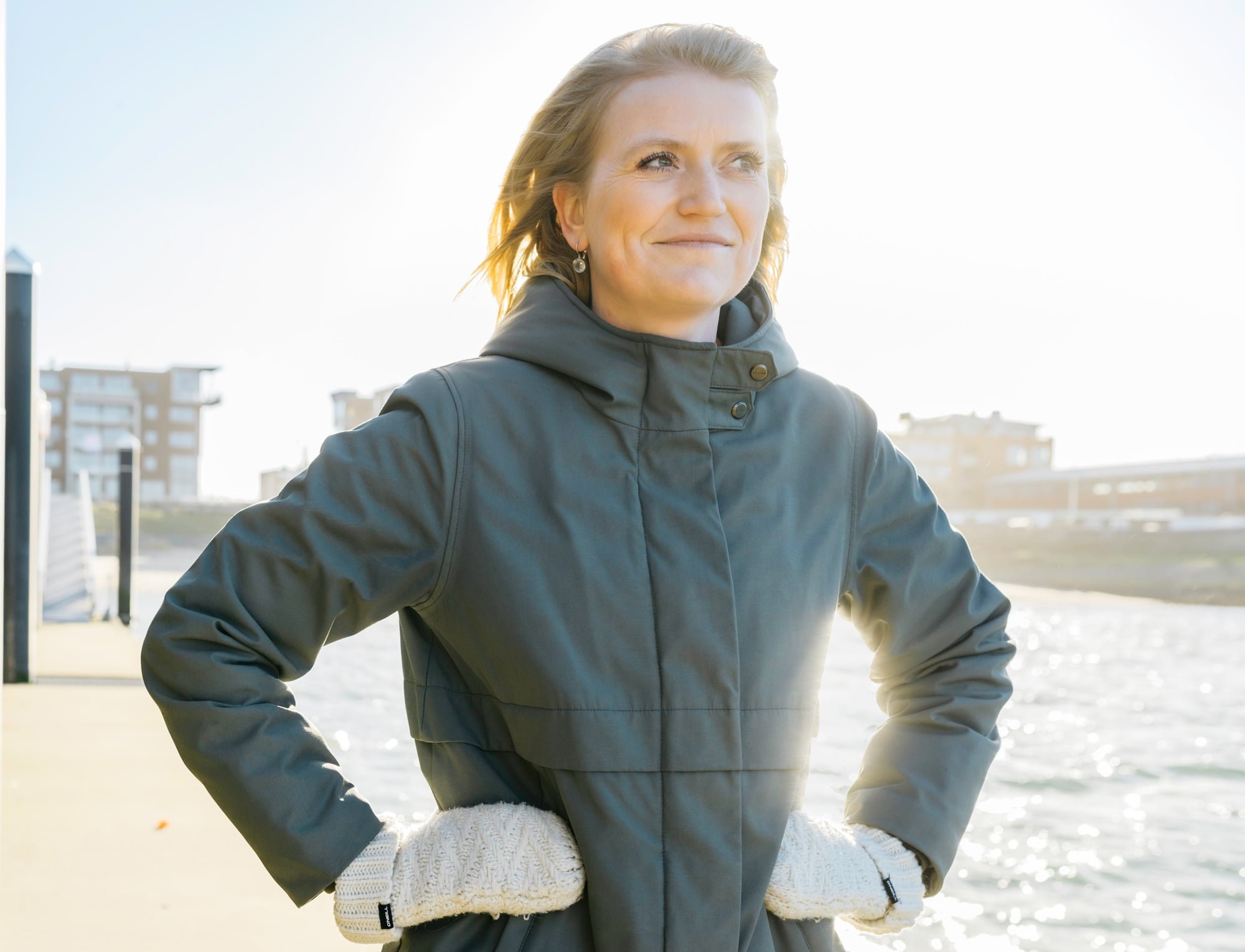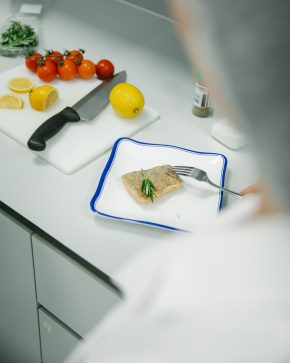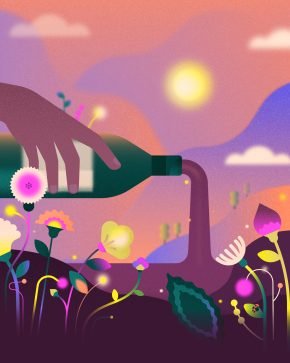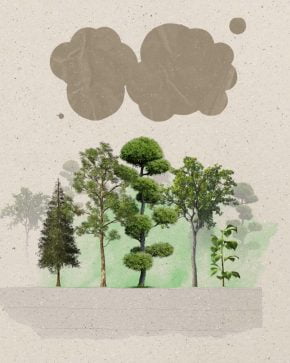There’s treasure in the ocean. Hidden beneath the waves is a sustainable source of food, fuel, fertiliser and even biodegradable plastics. In the battle against climate change and environmental damage, could seaweed be our greatest untapped resource?
Tell a farmer that you’ve found a crop that can grow a metre in a couple of days and they’ll laugh at you. But it’s true: it’s called seaweed. And as the world opens its eyes to seaweed’s huge potential, the business of farming it is growing just as fast.
From 2005 to 2015, the amount of seaweed farmed around the world doubled. More than 30 million tonnes a year are now produced – mostly for food – in what has become a $6 billion business, mostly based in Asia.
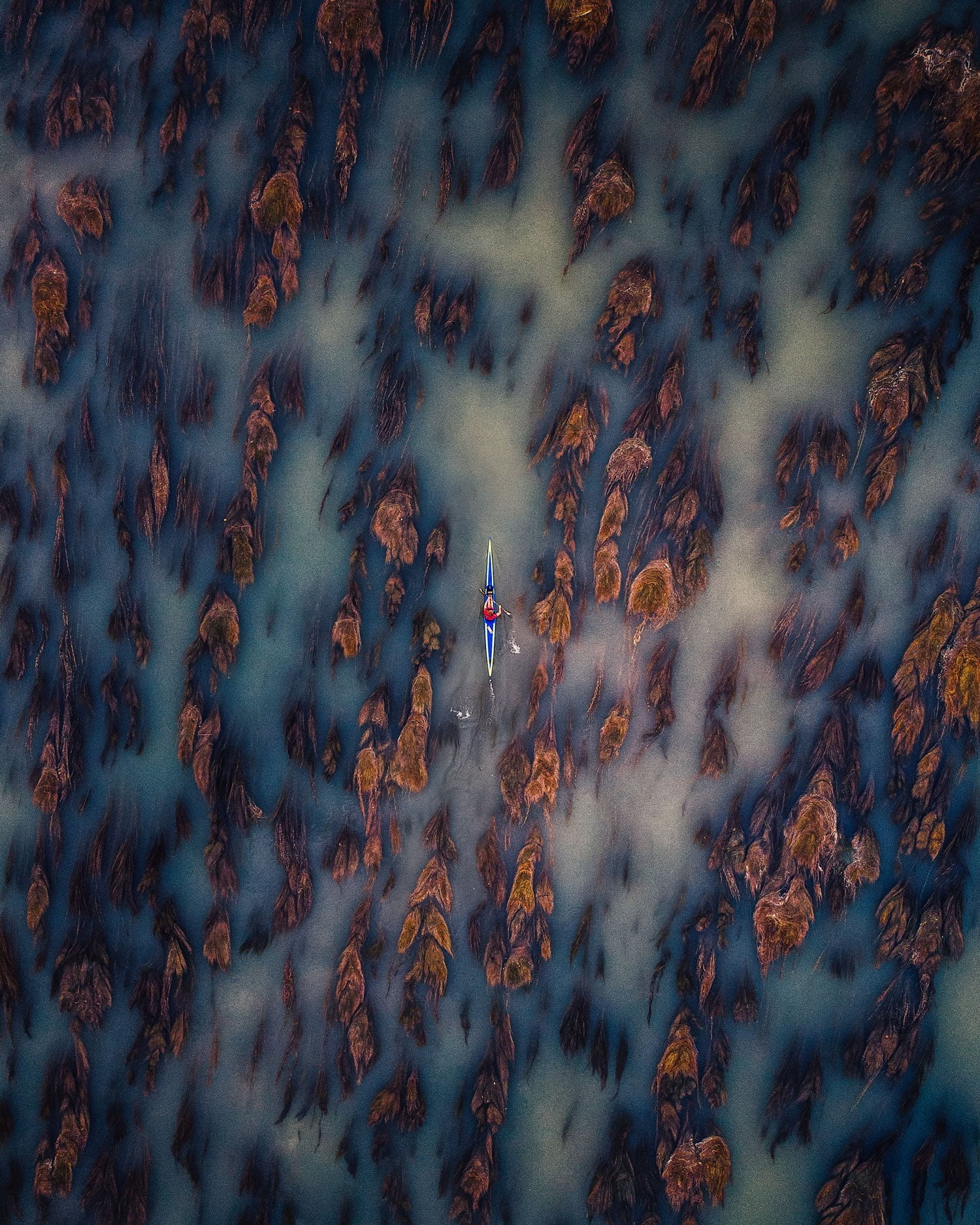
A kayak moving through river kelp in Zaragoza, Spain.
Photo: Abstract Aerial Art / Getty Images
If you think of seaweed as slimy, smelly and unsexy, it’s time to get over it. Trust us, you’ve already eaten plenty of products that contain it. And as the world faces the challenges of climate change, ocean pollution and food security for a growing population, this underappreciated underwater crop has the potential to nourish us sustainably, keep CO2 out of the atmosphere, clean up the oceans and create the materials and fuels of the future. Be in no doubt: seaweed is going to be a bigger part of all our lives.
However, when it comes to seaweed, the world is playing catch-up. “We’re 10,000 years late,” says Vincent Doumeizel, an oceans expert at the UN Global Compact, which works with businesses on sustainability. “The way we produce crops on land today is the result of 10,000 years of experience, breeding, building tools and systems… With seaweed, we’re in the stone age. We’re hunter-gatherers.” Doumeizel is determined to pull the seaweed business into the 21st century.
“Green seaweeds have more in common with an oak tree or a strawberry than with brown seaweeds”
Vincent Doumeizel, UN Global Compact
Not a weed
The modest label of “seaweed” hardly does justice to this vast family of what might better be termed “sea vegetables”. They come in every shade of red, green and brown, with long, broad fronds, wispy leaves and fruit-like forms. Green seaweeds – from which all land plants evolved – “have more in common with an oak tree or a strawberry than with brown seaweed”, says Doumeizel, while the genetic difference between different seaweeds can be like the difference between “a mushroom and a rabbit”.
The most widely farmed species are guso and kelp, but there’s also ogo, wakame, nori and literally thousands more, of which only a fraction have even been recorded. Far from being weeds, they’re precious crops.
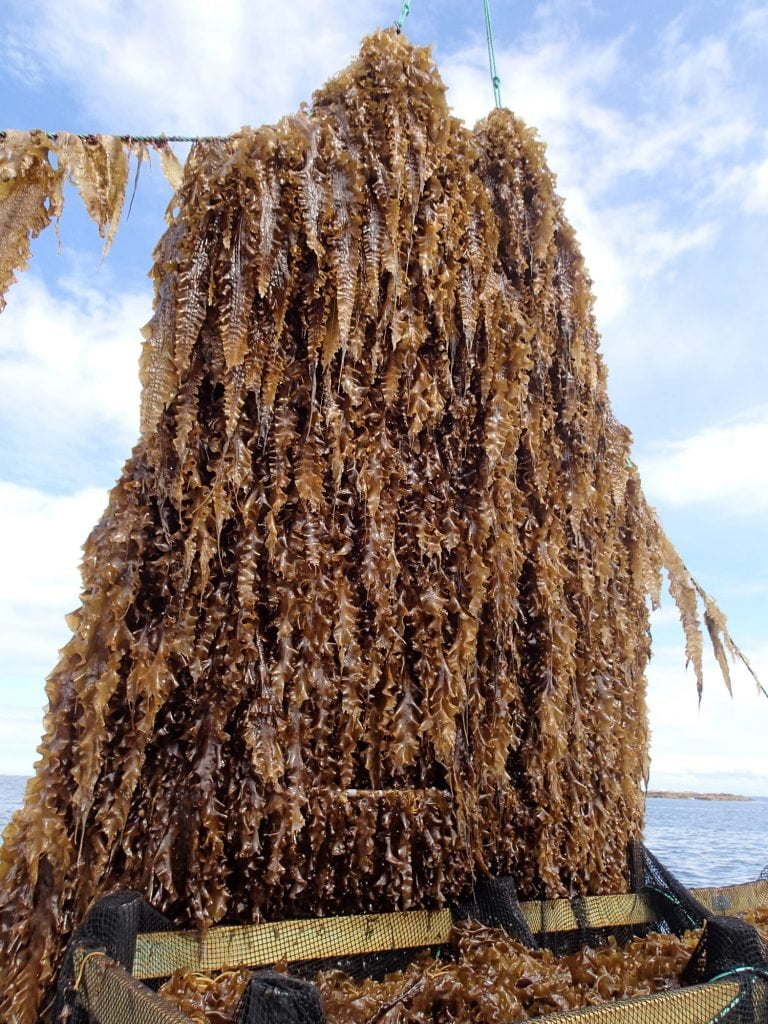
Seaweed doesn’t need any feed or fertiliser, and grows very fast.
Photo: Seaweed Solutions, Norway

Vincent Doumeizel displays some of the precious crop.
Photo courtesy of Station Biologique de Roscoff
In fact, once you begin to learn about seaweed, it seems amazing that this incredible resource has been so overlooked. Although it’s a big part of the diet in Japan and a few other countries, it’s not a staple in the west. Currently, only three per cent of the world’s diet comes from the sea. But we’re all out of arable land, so if we are to hold back deforestation and the other impacts of agriculture, that number needs to go up.
Cultivating seaweeds may not be easy, but compared to other types of farming, there’s a lot going for it, says Doumeizel. “You don’t need land, you don’t need feed, you don’t need fresh water, you don’t need pesticides, it grows fast, it’s not going to run away…”
Seaweed is packed with protein and nutrients vital to human health, including sodium, potassium, iodine and iron. It’s one of the only vegetables to contain vitamin B12, and the presence of seaweed in our ancestors’ diets is even believed to have contributed to the evolution of humans’ unique brains. It’s also a big source of gelling agents used in dairy products, cosmetics and wound dressings, and it makes high-quality feed for livestock, fish and pets.
The sustainability credentials are equally impressive. As well as being a resource in itself, seaweed supports fish and shellfish. If we want to build ecosystems at sea instead of breaking them, seaweed is an excellent place to start. This is all the more important since wild seaweed is increasingly vulnerable to disruption of the ocean ecosystem caused by human activity.
On top of that, its capacity to absorb carbon is even greater than that of the rainforest, per square metre. Doumeizel says: “When we tell people to plant a tree, that’s fine, but a tree in the early years, it will grow 30cm a year. Seaweed can grow up to 30cm a day, and can grow up to 60m high.” Some have even suggested cultivating it purely to sink it to the bottom of the ocean and lock in the carbon.
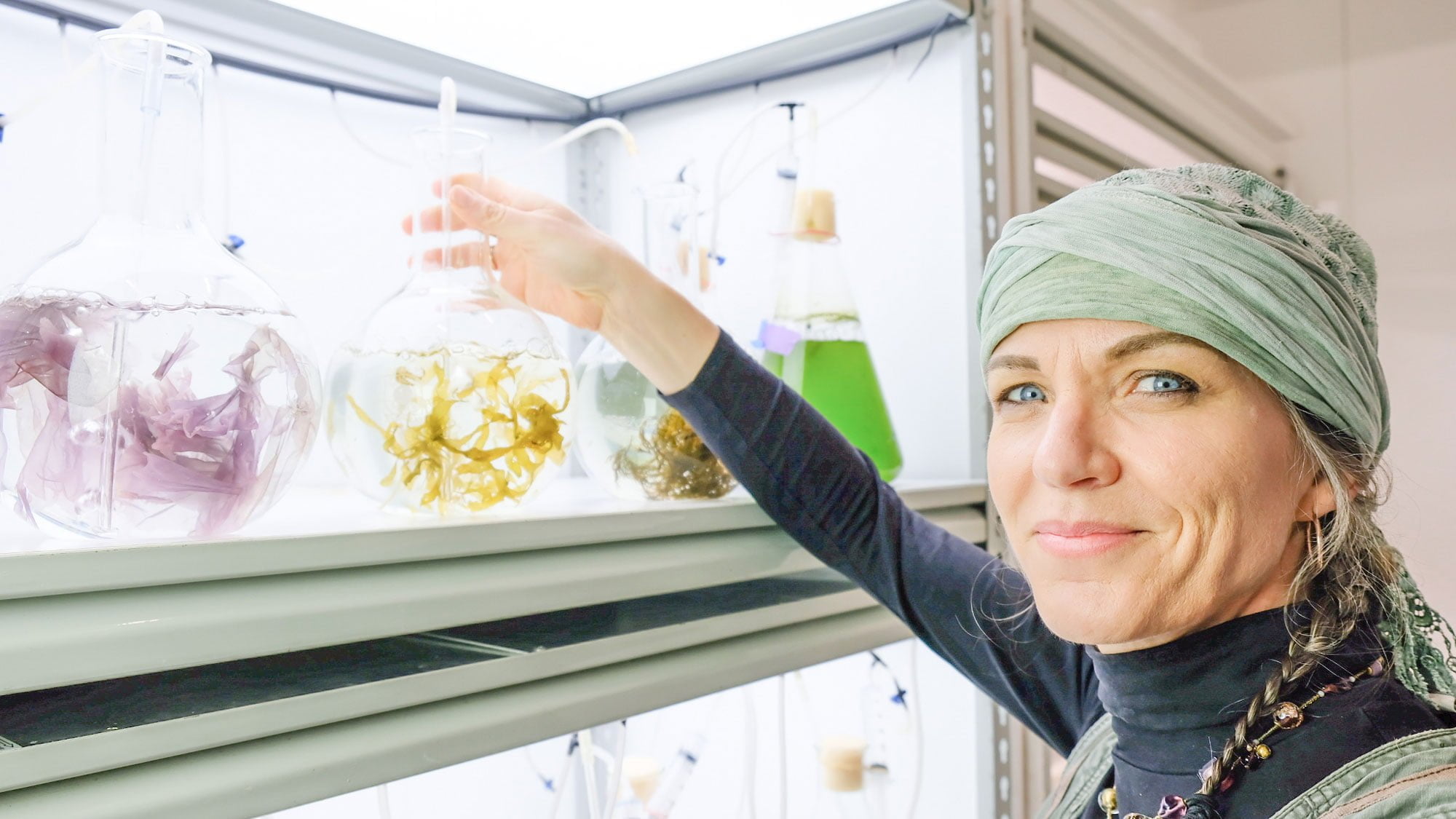
That could happen in future as part of a carbon credit system, but for now, no farmer is going to sink a crop that’s so bursting with value. On the coast of New South Wales, Australia, marine scientist Pia Winberg runs a company called PhycoHealth, which makes seaweed-enhanced foods and cosmetics, trading on the health benefits. Her eyes were opened to the difference seaweed could make to the environment when she visited a prawn farm in Sri Lanka that had been hit by disease. Winberg studied what had gone on, and brought together combinations of species that could use up each other’s waste. She saw that seaweeds were “a key missing link in the chain”. Once they were introduced, together with mussels and milkfish, the waters recovered. Prawns and seaweed thrived.
Similarly, fish farmers around the world have discovered that their waste water is full of nutrients that seaweed loves, and it now grows alongside sea snails in China, oysters in France, shrimp in Brazil and salmon in Chile and the US. It’s a way of farming that restores and sustains ecosystems, rather than degrading them.
The turning tide
Winberg has been talking up seaweed for over a decade, and now sees “a combination of things falling into place” to make people listen: the huge cost of poor diets, the climate crisis, the global popularity of Asian cuisine. “The dots are joining up,” says Winberg. “Sustainability is the initial driver, but human health and nutrition is the second driver.”
On the other side of the globe, Charlie Yarish, a professor of marine sciences at the University of Connecticut, has been singing the praises of seaweed for even longer. He too sees the tide turning. “It has been the last five or six years that we’ve really seen an explosion of interest,” he says.
Much of Yarish’s work has taken place in Long Island Sound, the body of water sandwiched between the states of New York and Connecticut – two of the most densely populated areas of the US. When he first suggested growing seaweed here, “I wasn’t able to get to square one,” he says. “They thought I was crazy.” Now, Yarish has shown that seaweed farming can work here, even in relatively polluted areas. It’s safe to eat and keeps the water healthy too.

Bren Smith harvests kelp. Photo courtesy of GreenWave

Smith grows oysters alongside his seaweed. Photo: Matthew Novak
The growing appeal of seaweed has attracted former fish and shellfish farmers to make the switch. Bren Smith saw his oyster farm in Long Island Sound washed away in a hurricane in 2011 – and again in 2012. So he reinvented himself as a “3D ocean farmer”, using the full vertical space of the sea to grow seaweed, mussels, scallops, clams and oysters. Smith now runs GreenWave, a nonprofit that supports other budding seaweed farmers with grants, training and market development.
It wasn’t a transition that Smith had planned for, but it paid off. “It’s kind of embarrassing for me to grow vegetables,” he told an environmental conference in 2016. “I can’t go to the same bars anymore.” On the plus side he’s had an acclaimed book published and won a $100,000 sustainability prize.
“The only way forward is to start selling a product people want”
Pia Winberg, PhycoHealth
Charlie Yarish sees initiatives like GreenWave as crucial. “If you don’t have a market then your science will lag,” he says. “It’s the entrepreneurs who will push decision makers in any field.” Pia Winberg feels the same. “Seaweed should be cleaning up the world, but nobody pays to clean up,” she says. “The only way forward is to stop writing papers about it and start selling a product that people want.” For Winberg, the plan was clear: “Put it in the food we eat every day.” Hence PhycoHealth’s range of pastas and other seaweed-enhanced foods. Although the flavour of seaweed isn’t something most of us are used to, Winberg says pasta with up to 10% seaweed content is “very broadly acceptable”. “It’s definitely not challenging for 80% of the population,” she says, and about half of PhycoHealth’s customers come back again.

Pia Winberg wants to make seaweed a staple part of our diet.
Photo courtesy of PhycoHealth
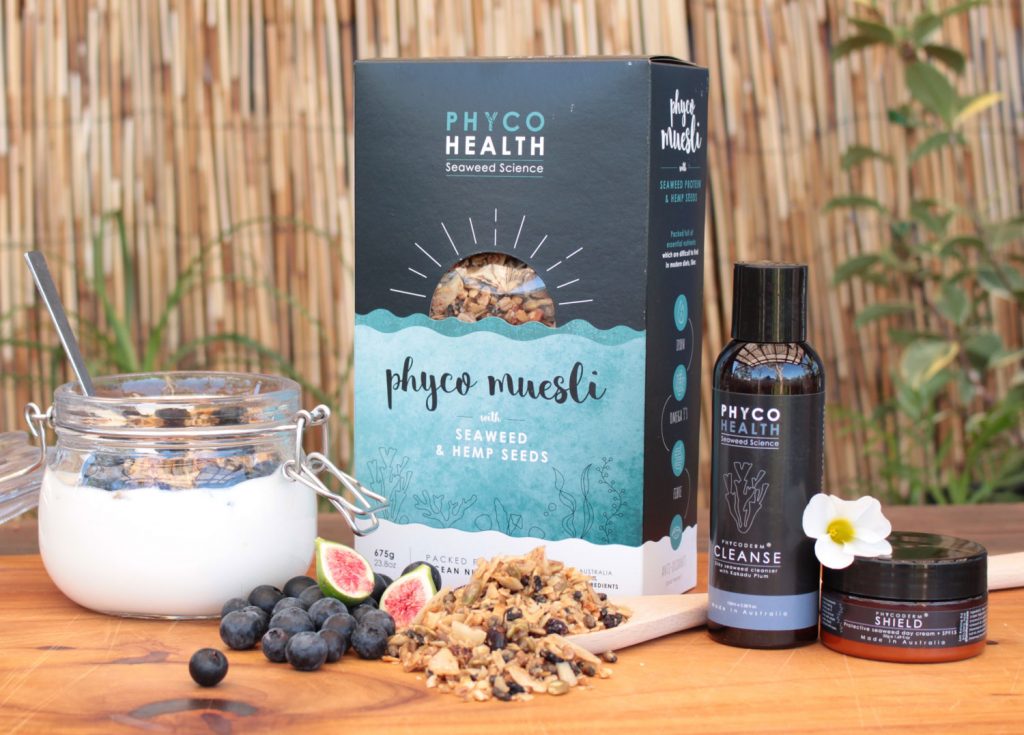
Products based on seaweed are healthy for people and planet.
Photo courtesy of PhycoHealth
Winberg’s aspiration is for seaweed to become a staple food, and promoting its dietary benefits should be a “no-brainer” for governments, she says. At the same time, she’s wary of hype that risks feeding false hope, and has gone out of her way to sound a note of caution about recent studies showing that a small amount of a particular red seaweed in the diet of cattle can reduce the methane they burp out by as much as 90% (technically true, with a lot of ifs and buts).
Beyond food
While most of the seaweed grown today is eaten, food is only the tip of the iceberg of how it can be used. Seaweeds contain polymers with similar properties to plastics – except they’re biodegradable, or even edible. UK startup Notpla uses seaweed to make clear pods containing water or other drinks, that can simply be eaten whole. They’ve been tried out at events including the London Marathon, replacing single-use cups.

Athletes drink the liquid and swallow the packaging, so nothing is thrown away. Photo: Notpla

Notpla’s pods are a new way to package liquids. Photo: Notpla
Potentially even more exciting is seaweed-based biofuel. Although it still emits greenhouse gases when burned, fuel derived from seaweed only releases what it previously absorbed – unlike fossil fuels which release carbon that was previously trapped underground. A viable biofuel industry requires scale and technology that doesn’t yet exist, so a $22m US-government backed programme is working to provide just that, by funding 20 experimental projects. One of these, in the sea off California, is trying to speed up the growth of kelp by using drone submarines to bring it near the surface while the sun is shining, then deep under the sea at night, to absorb nutrients.
All over the world, efforts are underway to take seaweed farming to the next level. The UN Global Compact recently set out its vision for an “upscaled, responsible and restorative” seaweed industry in its “Seaweed Manifesto”. It is now helping establish a coalition of hundreds of organisations to cooperate on food safety for seaweed products – a key step towards a more mature sector.
“We’re all craving good news, and here’s an untapped resource creating optimism”
Vincent Doumeizel, UN Global Compact
In the Netherlands, a consortium called North Sea Farmers has brought together experts, entrepreneurs and energy companies to experiment with growing seaweed in the space between offshore wind turbines. One of them is combining it with floating solar panels.
Meanwhile in Namibia, a $60 million kelp farm is being built offshore, to benefit from deeper, more nutrient-rich waters.
The possibilities are just like seaweed itself: diverse, abundant, and growing by the day. And concern over the climate means “the timing is right”, to grasp those opportunities, says Doumeizel. “We’re all craving good news and here’s an untapped resource creating optimism. We all need that.”
DISCOVER MORE
- Check out PhycoHealth’s range of healthy seaweed-enhanced pasta and other products
- See Notpla’s seaweed-based edible plastic in action

